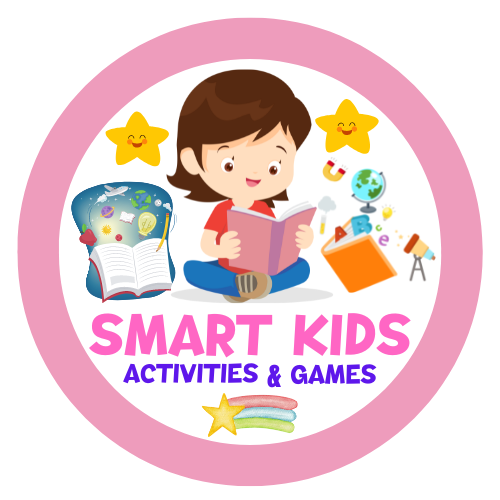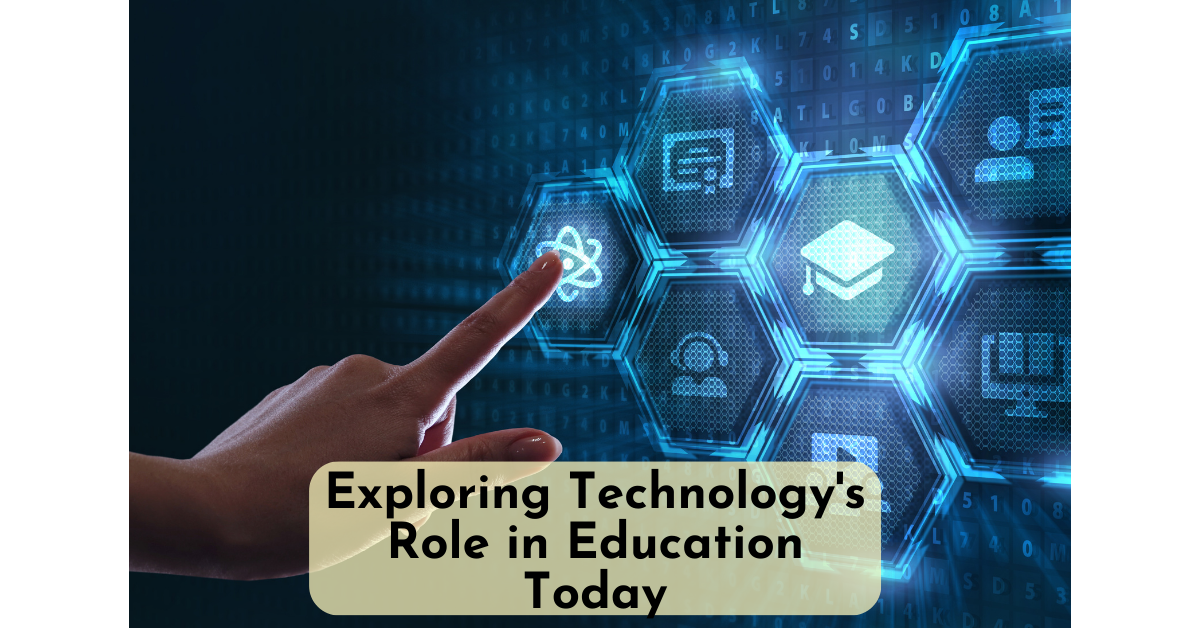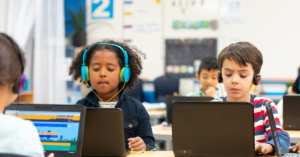Key Takeaways:
- Technology plays a crucial role in enhancing the accessibility and inclusivity of education.
- It promotes personalized learning experiences and the development of future-ready skills.
- Technology in education requires addressing challenges such as the digital divide and privacy concerns.
- The integration of technology streamlines administrative processes and enhances engagement and motivation.
- Technology transforms traditional classrooms into dynamic learning environments that prepare students for the digital world.
Understanding the Role of Technology in Education
Technology plays a pivotal role in education, revolutionizing the way students learn and teachers facilitate instruction. By leveraging the power of technology, educational institutions can enhance accessibility, inclusivity, and personalized learning experiences for students. Online learning platforms and virtual classrooms have opened up new avenues for education, making it more accessible to learners of all backgrounds. Students can now access educational resources, participate in interactive activities, and connect with instructors from the comfort of their homes. Furthermore, technology promotes inclusivity by catering to individual learning needs. With a variety of digital tools and applications, educators can create personalized learning experiences that align with students’ interests and learning styles. This individualized approach fosters student engagement and helps address learning gaps. Integrating technology in education also equips students with future-ready skills essential for success in the modern world. By utilizing digital tools and platforms, students develop critical skills such as digital literacy, collaboration, and communication. These skills are crucial for thriving in a technology-driven society and preparing for the demands of the future workforce.Benefits of Technology in Education:
- Enhanced accessibility and inclusivity
- Personalized learning experiences
- Promotion of future-ready skills
- Increased engagement and motivation
- Improved collaboration and communication
“Technology is not just a tool. It can give learners a voice that they may not have had before.”
| Role of Technology in Education | Examples |
|---|---|
| Increased accessibility | Online learning platforms, virtual classrooms |
| Personalized learning | Adaptive learning software, educational apps |
| Promotion of future-ready skills | Digital literacy programs, collaboration tools |
| Improved engagement | Interactive learning activities, gamification |
| Enhanced collaboration | Virtual group projects, online discussion forums |
Problems and Solutions with Technology in Education
While technology has brought numerous benefits to education, it also presents challenges that need to be addressed. These challenges encompass various aspects, which include:- Bridging the Digital Divide: Ensuring equal access to technology and internet connectivity among students and schools is crucial in overcoming the digital divide and ensuring equitable learning opportunities for all.
- Technological Proficiency: Promoting technological proficiency among both students and teachers is essential to maximize the benefits of technology in education.
- Equity and Inclusion in Technology: Addressing issues of equity and inclusion ensures that technology is accessible to diverse student populations, addressing social and economic disparities.
- Digital Literacy Gaps: Bridging the digital literacy gaps by providing comprehensive digital literacy training to students and teachers helps them navigate and utilize technology effectively.
- Privacy and Security Concerns: Addressing privacy and security concerns associated with using technology in education is vital to protect students’ data and ensure their safety online.
- Pedagogical Adaptation: Adapting pedagogical practices to integrate technology effectively, ensuring it aligns with instructional goals and enhances learning experiences.
- Cost of Technology in Education: Managing the cost associated with acquiring technology, including devices, software, and infrastructure, is necessary to make technology-enabled education financially sustainable.
Importance of Technology in Education
In today’s rapidly evolving world, the significance of technology in education cannot be overstated. It has revolutionized learning experiences, making education more accessible, personalized, and future-ready. By incorporating technology into education, we can transform traditional classrooms into dynamic learning environments that prepare students for success in the 21st century. One of the key benefits of technology in education is its ability to enhance accessibility. Digital tools and online platforms can break down barriers, providing equal educational opportunities for students regardless of their location or circumstances. This ensures that no student is left behind, fostering inclusivity and equity in education. Technology also enables personalized education, catering to the unique learning needs and preferences of each student. Through adaptive learning programs, virtual simulations, and interactive resources, students can engage in personalized learning experiences that help them thrive academically. Furthermore, technology in education plays a vital role in developing future-ready skills. As the workforce becomes increasingly digital, students need to acquire skills such as digital literacy, critical thinking, problem-solving, collaboration, and communication. By integrating technology into education, we can equip students with the skills they need to succeed in a rapidly changing world. Data-driven education is another significant aspect of technology integration. By harnessing the power of data analytics, educators can gain valuable insights into student performance, instructional effectiveness, and individual needs. This enables them to tailor instruction and interventions to optimize learning outcomes. Additionally, technology streamlines administrative processes, improving efficiency and effectiveness. Whether it’s managing student records, automating grading systems, or facilitating communication between teachers, students, and parents, technology simplifies administrative tasks, allowing educators to focus more on teaching and student support. In summary, the importance of technology in education cannot be ignored. It transforms learning experiences, promotes personalized education, develops future-ready skills, enables data-driven education, and enhances administrative efficiency. By embracing technology, we can create inclusive, engaging, and effective learning environments that prepare students for success in the digital age.Challenges of Technology in Education
As technology becomes more prevalent in education, there are several challenges that need to be addressed in order to fully leverage its potential. These challenges encompass various aspects of technology integration and its impact on students, teachers, and educational institutions.The Digital Divide
One of the primary challenges is the digital divide, which refers to the unequal access to technology and internet connectivity among students. This divide can lead to disparities in educational opportunities and hinder students’ ability to fully engage in technology-enabled learning.Technological Proficiency
Ensuring technological proficiency among both students and teachers is another significant challenge. While many students are digital natives and familiar with using technology, others may lack the necessary skills to effectively navigate digital tools and resources. Additionally, providing adequate training and professional development opportunities for teachers to effectively integrate technology into their pedagogy is crucial.Equity and Inclusion
Another challenge revolves around promoting equity and inclusion in technology-enabled education. It is essential to ensure that all students, regardless of their socio-economic background or abilities, have equal access to technological resources and learning opportunities. Additionally, it is necessary to address any biases or inequalities that may arise in the use of technology in educational settings.Digital Literacy Gaps
Addressing digital literacy gaps is another key challenge. Digital literacy encompasses the skills necessary to navigate, evaluate, and use information effectively in digital environments. Bridging these gaps requires targeted interventions and programs to equip students with the necessary digital literacy skills.Privacy and Security Concerns
With the increasing use of technology in education, privacy and security concerns also come to the forefront. Safeguarding student data and ensuring the privacy of students and teachers in online environments are critical considerations that need to be addressed effectively.Pedagogical Adaptation
Integrating technology into pedagogical practices and adapting instructional approaches can be challenging for educators. They need to explore innovative ways to incorporate technology without compromising the quality of teaching and learning experiences. This may require ongoing professional development and support to equip teachers with the necessary skills and knowledge to leverage technology effectively.Cost of Technology in Education
The acquisition and implementation of technology in education can be costly. Educational institutions need to consider the financial implications of investing in technology and ensure long-term sustainability. Additionally, addressing the issue of affordability and access for underserved communities is crucial to bridge the digital divide. Addressing these challenges requires collaboration among educational stakeholders, policymakers, and technology providers. By proactively tackling these issues, education can embrace the transformative potential of technology, ensuring that it is harnessed in a way that benefits all students and promotes inclusive and equitable learning environments.Benefits of Technology in Learning and Development
Technology has revolutionized education, providing numerous benefits that enhance learning and development. The integration of technology offers:- Access to Information and Resources: Technology enables students to access a vast array of information and resources, expanding their knowledge beyond traditional textbooks and classrooms.
- Personalized Learning Experiences: With technology, students can learn at their own pace and according to their individual needs, receiving personalized instruction that caters to their strengths and weaknesses.
- Collaboration and Communication Opportunities: Online platforms and digital tools facilitate collaboration and communication among students and teachers, fostering teamwork and the exchange of ideas.
- Enhanced Engagement and Motivation: Interactive multimedia and gamified learning experiences engage students, making learning more enjoyable and motivating.
- Data-Driven Education: Technology allows educators to collect and analyze data on student performance, enabling personalized instruction and targeted interventions to enhance learning outcomes.
- Streamlined Administrative Processes: Technology simplifies administrative tasks such as grading, attendance tracking, and scheduling, freeing up time for teachers to focus on instruction.
Transforming Education with Technology
Technology has revolutionized the education landscape, bringing about a transformative shift in teaching and learning methodologies. Gone are the days of traditional teacher-centered classrooms. With the integration of innovative technologies, education has become more dynamic, engaging, and student-centered. One of the key ways technology is transforming education is through interactive whiteboards. These interactive displays allow teachers to create immersive and engaging learning experiences by incorporating videos, images, and interactive activities. Students can actively participate in lessons, making learning more enjoyable and impactful. Educational apps have also played a significant role in transforming education. These apps provide personalized learning opportunities, catering to individual student needs and learning styles. By offering interactive quizzes, educational games, and virtual simulations, these apps make learning more engaging and effective.Technology in education is not just about using smartphones and tablets in the classroom. It is about creating an environment that encourages collaboration, critical thinking, and problem-solving.Virtual simulations have brought the world into the classrooms, allowing students to explore places and concepts that were previously inaccessible. From virtual field trips to historical sites to simulated science experiments, these simulations provide hands-on learning experiences that enhance comprehension and critical thinking skills. Furthermore, online resources have opened up a wealth of educational materials for both students and teachers. These resources offer access to a vast array of educational content, including videos, articles, e-books, and interactive tutorials. They empower students to take ownership of their learning by providing them with the necessary tools and information.
The Future of Education
The integration of futuristic technologies in education holds immense potential for the future. Technologies such as augmented reality (AR) and virtual reality (VR) have the power to transform the way students learn by creating immersive and realistic experiences. Imagine exploring ancient civilizations through an AR headset or conducting virtual experiments in a VR lab. By embracing innovation in education, schools are preparing students for the digital age. Technology equips them with essential skills such as problem-solving, critical thinking, collaboration, and creativity. These skills are crucial for success in the future workforce, where adaptability and technological literacy are highly valued. The transformation of classrooms with technology is not just about using fancy gadgets; it is about providing students with the tools and resources they need to thrive in a rapidly changing world.The Impact of Technology on Education
The impact of technology on education cannot be overstated. It has revolutionized the way teachers teach and students learn. With technology, classrooms have become more inclusive, as students with various learning styles and abilities can access personalized learning experiences. The use of technology in education also enhances communication and collaboration among students. Online platforms and tools facilitate seamless communication and the sharing of ideas, fostering a collaborative learning environment. Students can work together on projects, share resources, and provide feedback to one another. Moreover, technology enables data-driven education, allowing teachers to monitor student progress, identify learning gaps, and provide targeted instruction. Teachers can analyze data to make informed decisions and tailor their teaching strategies to meet individual student needs.| Technology in Education | Impact |
|---|---|
| Interactive whiteboards | Enhanced engagement and interactive learning |
| Educational apps | Personalized learning experiences |
| Virtual simulations | Hands-on and immersive learning |
| Online resources | Access to a vast array of educational content |
| AR and VR | Immersive and realistic learning experiences |
The Impact of Technology on Learning
Technology has revolutionized the way we learn, making a significant impact on education. With the advent of technology, students now have easy access to a vast array of information and resources, enabling better comprehension and understanding. The classroom has been enriched with the integration of technology, offering interactive and engaging learning experiences. Through the use of educational apps, online platforms, and virtual simulations, students can actively participate in their learning journey, resulting in improved comprehension and class engagement. Moreover, technology has opened up personalized learning opportunities for students. With adaptive learning platforms, students can tailor their learning experiences to meet their individual needs and pace. This personalized approach to education fosters a deeper understanding of concepts and promotes self-directed learning. Collaboration and communication among students and teachers have also been enhanced through the integration of technology. Digital tools enable students to work together on projects, exchange ideas, and provide feedback, fostering a sense of collaboration and teamwork. Better communication between teachers and students is facilitated through technology as well. Online platforms and communication tools allow for seamless communication, enabling students to reach out to their teachers for assistance and support whenever they need it.Enabling Better Comprehension
Technology provides students with access to a wealth of information and resources, allowing for better comprehension and a deeper understanding of concepts. With the ability to research and explore topics at their own pace, students can delve deeper into subjects and connect classroom learning to real-world applications.Enhancing Interactivity and Class Engagement
Integrating technology in the classroom enhances interactivity and engagement. Interactive whiteboards, educational games, and virtual simulations make learning a dynamic and immersive experience, capturing students’ attention and fostering active participation.Personalized Learning Opportunities
Technology enables personalized learning, catering to individual student’s needs and learning styles. Adaptive learning platforms and intelligent tutoring systems use data and analytics to deliver tailored instruction, ensuring that students receive the support and resources they require to succeed.Increased Collaboration and Better Communication
Technology promotes collaboration amongst students, allowing them to work together on projects, share ideas, and learn from each other. Additionally, communication between students and teachers is enhanced through online platforms and communication tools, creating a seamless and efficient learning environment.Impact of Technology on Education
| Impact | Description |
|---|---|
| Access to Information and Resources | Technology provides students with easy access to a vast array of information and resources, enabling better comprehension and understanding of concepts. |
| Enrichment of the Classroom with Technology | The integration of technology in the classroom enhances interactivity, engagement, and the overall learning experience for students. |
| Better Comprehension | Technology enables students to delve deeper into subjects, connect classroom learning to real-world applications, and develop a deeper understanding of concepts. |
| Interactivity and Class Engagement | Interactive whiteboards, educational games, and virtual simulations make learning a dynamic and immersive experience, capturing students’ attention and fostering active participation. |
| Personalized Learning Opportunities | Technology enables personalized learning, catering to individual student’s needs and learning styles through adaptive learning platforms and intelligent tutoring systems. |
| Increased Collaboration | Technology promotes collaboration amongst students, allowing them to work together, share ideas, and learn from each other. |
| Better Communication | Technology facilitates seamless communication between students and teachers, ensuring effective and efficient support for student learning. |
Advantages of Technology in Education
Technology in education offers numerous advantages that enhance the learning experience and empower students for success. By leveraging technology, students can apply their knowledge practically, develop critical thinking skills, collaborate effectively, communicate with teachers more efficiently, and access personalized learning opportunities.- Knowledge Application: Technology allows students to apply their knowledge practically, bridging the gap between theory and real-world applications. Through simulations, interactive activities, and virtual experiments, students gain a deeper understanding of concepts and develop problem-solving skills.
- Critical Thinking Skills: The integration of technology in education promotes the development of critical thinking skills. Students are encouraged to analyze information, think critically, and evaluate different perspectives. Technology offers interactive and engaging tools that foster creativity, innovation, and problem-solving abilities.
- Increased Collaboration: Technology enables collaboration among students, regardless of geographical barriers. Virtual platforms and online discussion boards facilitate group work, allowing students to exchange ideas, perspectives, and insights. Collaborative projects promote teamwork, communication, and the development of essential social skills.
- Better Communication: Technology improves communication between students and teachers. Online platforms, email, and messaging apps provide convenient and timely communication channels for clarifying doubts, seeking feedback, and engaging in discussions. Real-time communication enhances the student-teacher relationship and supports personalized learning.
- Personalized Learning Opportunities: Technology offers personalized learning opportunities tailored to individual student needs. Adaptive learning platforms, online assessments, and intelligent tutoring systems adjust the learning pace and content according to each student’s progress and learning style. Personalized learning promotes student engagement, motivation, and academic success.
| Advantages | Description |
|---|---|
| Knowledge Application | Technology allows students to apply their knowledge practically, bridging the gap between theory and real-world applications. |
| Critical Thinking Skills | The integration of technology in education promotes the development of critical thinking skills, fostering creativity, innovation, and problem-solving abilities. |
| Increased Collaboration | Technology enables collaboration among students, facilitating group work and the exchange of ideas, perspectives, and insights. |
| Better Communication | Technology improves communication between students and teachers, providing convenient and timely channels for interaction and feedback. |
| Personalized Learning Opportunities | Technology offers personalized learning experiences tailored to individual student needs, enhancing engagement, motivation, and academic success. |
The Future of Technology in Education
The future of technology in education holds immense potential. Advancements in technology will continue to shape the education landscape, providing new opportunities for personalized learning experiences, STEAM (Science, Technology, Engineering, Arts, and Mathematics) learning, and skill development. As technology evolves, it will play a vital role in preparing students for the future workforce. By integrating technology into education, students can gain the necessary skills and knowledge to thrive in a rapidly changing digital world. Personalized learning experiences, made possible through technology, allow students to learn at their own pace and cater to their individual needs and interests. This approach fosters engagement and helps students develop a deeper understanding of the subject matter. STEAM learning experiences, which integrate the sciences, technology, engineering, arts, and mathematics, provide students with the skills needed to tackle complex problems and think critically. By engaging in hands-on, interdisciplinary projects, students can develop a range of skills that are highly valued in the modern workforce. Furthermore, technology in education enables students to explore new areas and develop essential skills such as creativity, collaboration, and problem-solving. These skills are crucial for the future workforce, which demands adaptable individuals who can navigate and thrive in an ever-changing technological landscape. In conclusion, the future of technology in education is bright. Technological advancements will continue to enhance education, offering personalized learning experiences, STEAM learning opportunities, and skill development. By embracing technology, educational institutions can prepare students for the challenges and opportunities of the future, empowering them to succeed in the digital age.Conclusion
Technology has become an integral part of education, revolutionizing the learning experience and equipping students with the skills they need for the future. Despite the challenges it presents, the benefits of integrating technology into education are undeniable. By embracing technology, education becomes more accessible and inclusive. It opens up a world of resources and information, allowing students to explore and learn beyond the limitations of traditional classrooms. Technology also fosters engagement and motivation, making learning more interactive and personalized. Furthermore, the integration of technology in education promotes the development of future-ready skills, such as critical thinking, collaboration, and digital literacy. Students are prepared to navigate the fast-changing digital landscape and thrive in the workforce of tomorrow. In order to fully leverage the power of technology in education, it is crucial to address the challenges it presents, such as the digital divide, privacy concerns, and the cost of implementation. Collaborative efforts are needed to ensure equitable access, provide training and support for teachers, and establish policies that protect students’ privacy and security. Overall, technology has had a profound impact on education, transforming the way we teach and learn. By embracing technology, we create dynamic and effective learning environments that empower students and drive academic excellence. Harnessing the potential of technology is essential for the future of education and the success of our students.FAQ
What is the role of technology in education?
Technology plays a pivotal role in education by enhancing accessibility and inclusivity, promoting personalized learning experiences, and developing future-ready skills.
What are the benefits of technology in education?
Technology in education offers benefits such as access to information and resources, personalized learning experiences, collaboration and communication opportunities, enhanced engagement and motivation, data-driven education, and streamlined administrative processes.
What are the challenges associated with technology in education?
Challenges include addressing the digital divide, ensuring technological proficiency, promoting equity and inclusion, bridging digital literacy gaps, addressing privacy and security concerns, adapting pedagogical practices, and managing the cost of acquiring technology.
Why is technology important in education?
Technology is important in education as it transforms learning experiences, promotes personalized education, develops future-ready skills, enables data-driven education, and streamlines administrative processes.
How does technology impact learning?
Technology enhances learning by providing access to information and resources, enriching classroom experiences, improving comprehension, promoting interactivity and engagement, offering personalized learning opportunities, and facilitating collaboration and communication.
What are the advantages of technology in education?
Technology in education has advantages such as practical application of knowledge, development of critical thinking skills, increased collaboration, improved communication, and personalized learning opportunities.
What is the future of technology in education?
The future of technology in education holds immense potential, with advancements shaping personalized learning experiences, STEAM learning opportunities, and skill development for the future workforce.
How does technology transform education?
Technology transforms education by reshaping teaching and learning methodologies, revolutionizing the learning experience with interactive tools, apps, simulations, and online resources, and empowering students to become problem solvers and critical thinkers.
What is the impact of technology on education?
Technology has a significant impact on education, providing access to information and resources, promoting interactivity and engagement, facilitating personalized learning, enhancing collaboration and communication, and enriching the overall learning experience.
Why is technology so important in education?
Technology is important in education because it enhances accessibility, promotes personalized learning experiences, develops future-ready skills, enables data-driven education, and streamlines administrative processes.
How can technology benefit learning and development?
Technology benefits learning and development by providing access to a wide range of information and resources, facilitating personalized learning experiences, promoting collaboration and communication, enhancing engagement and motivation, enabling data-driven education, and streamlining administrative processes.
Download free activities and teaching resources Click Here
You may also be interested in
Unlocking Potential: A Guide for Every Substitute Teacher
Embracing Diversity: Importance of Inclusive Education
How to Celebrate Student Achievement: Creative Ideas
Building Positive Classroom Culture with Engaging Activities
10 Tips to Boost Classroom Learning Strategies Effectively
Source Links
- https://elearningindustry.com/the-role-of-technology-in-education-post-pandemic
- https://soeonline.american.edu/blog/technology-in-education/
- https://selectedfirms.co/blog/role-of-technology-in-education







